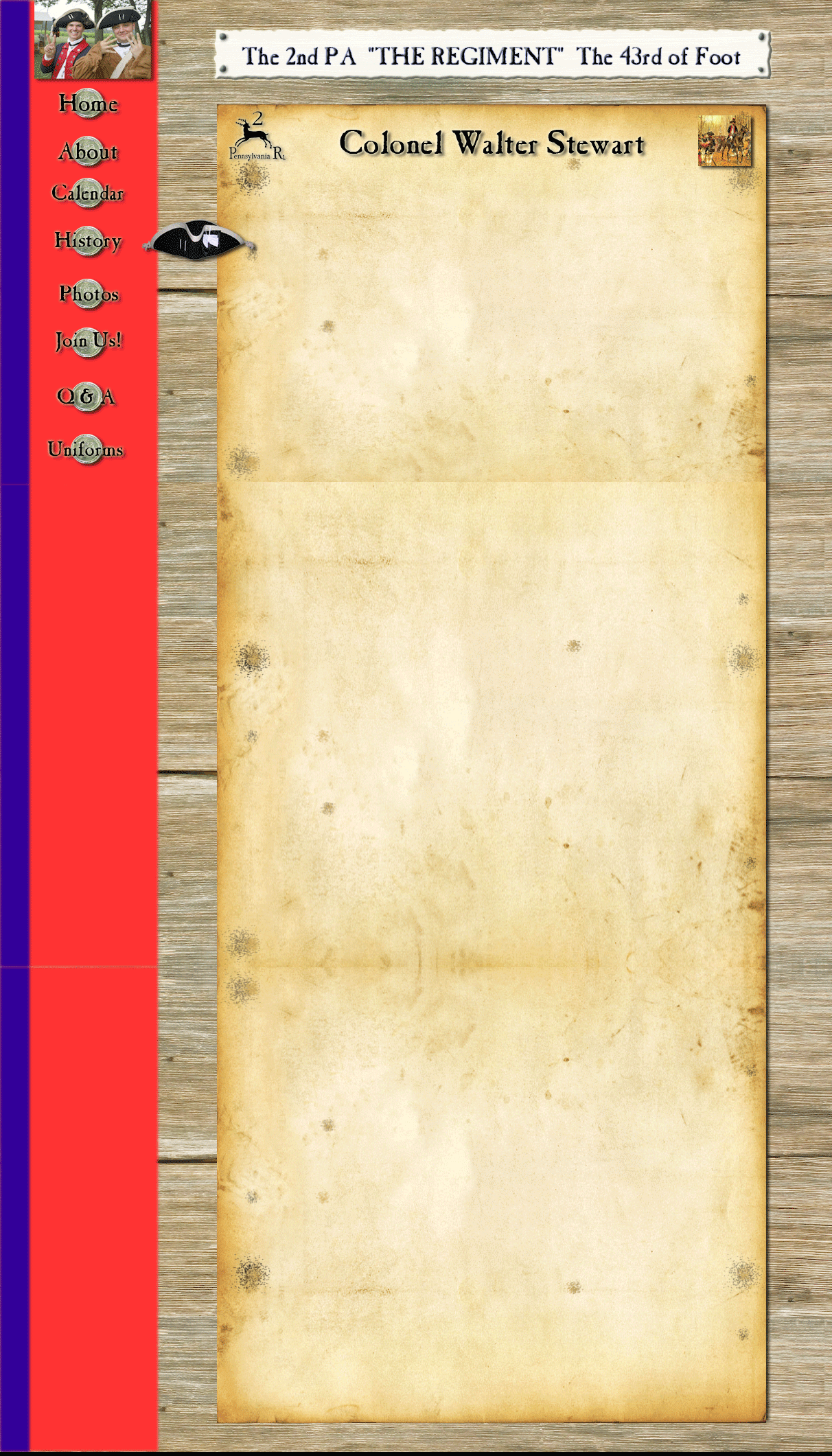
2nd PA History back
SOME NOTES ON THE PORTRAIT
OF COLONEL WALTER STEWART
It is nearly impossible to find an 18th Century portrait of a Continental Line officer that is filled with as much detail as the one painted by Charles Wilson Peale of Col. Walter Stewart of the Second Pennsylvania Regiment.
Believed to have been done in late 1780-early 1781, around the time of Stewart's wedding to young Philadelphian Deborah McClenachan, the prominence of the soldiers in the painting no doubt reflects the youthful commander's affinity for his troops and gives us a revealing look at their life in the field. On one side of the painting, soldiers in their blue-faced-red regimental coats are seen cooking at a circular "earthen kitchen" as described by military writer Humphrey Bland in 1762. Essentially an earthen mound surrounded by a ditch into which was cut several fireplaces for cooking, the painting confirms that this method of cooking was done in the Continental Army (but with what frequency is unknown). At the other side muskets can be seen placed on a "low fence" of simple rails, an American habit commented on by at least one French officer. Perhaps the variety of arms among American units (and the resulting lack of uniformity between them) made it impractical to stack firelocks in the European manner. Near the marquee in the background flys a distinctive white flag with what appears to be a coiled snake in the center beneath which is a blue riband, presumably the unit's regimental colour.
Stewart's elegantly tailored uniform reflects his rank, with substantial silver lace trimming and cuffs that are both "slashed" in the style of the French import "Lottery Coats" of his men and "round" in the British manner. The coat worn circa 1777 by New York's Peter Gansevoort in the collection of the Smithsonian Institution has cuffs done the same way.
I first viewed the painting in 1976, when it was on loan to Yale University Art Gallery by a private collector. When viewed from a certain angle it could be seen that Peale had first painted Col. Stewart with one leg in a different position as if he was striking a more classically "heroic" stance with one foot on top of something. Perhaps Stewart thought the pose a little too flamboyant and instructed the artist to paint it out and give him a more relaxed posture. If so, it gives us a hint that the colonel's personality might have included some humility as well as the strong sense of duty he was known for.
---Paul Loane





